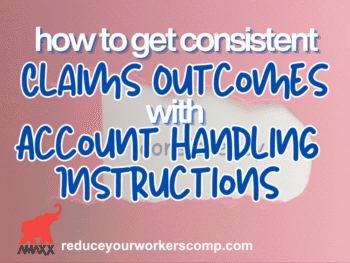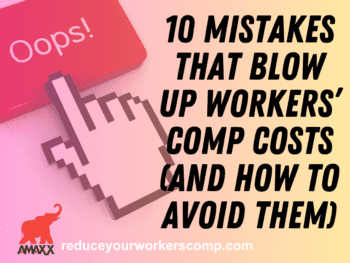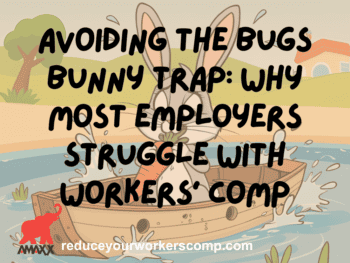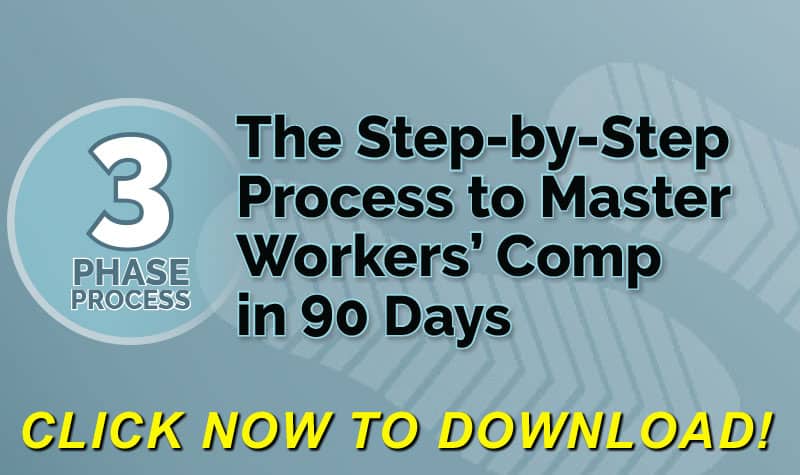Hello Michael Stack here. Principle of Amaxx, founder of Comp Club and co-author of Your Ultimate Guide to Mastering Worker’s Comp Costs.
Click Link to Access Free PDF Download
This past weekend was the start of the 2016 Rio Olympic Games. It is an impressive display by the world’s most elite athletes. It is something that I always look forward to and really enjoy watching. One of the elements in addition to the events that I really like to see is those personal stories, the back stories about the Olympians. Katie Ledecky is one of the US’s most decorated female swimmers. Just yesterday, she set the world record by almost two seconds in the 400 meter freestyle. It was an incredible event.
Before that event aired, before that race aired, they showed an interview between her and Matt Lauer from the Today Show. Matt asked Katie, he said, “What’s the secret to your success?” I thought the answer was just fantastic. She said, “The secret to my success is that there is no secret.” The secret to my success is that there is no secret. That’s years and years of practice, dedication and preparation in order to be able to dive into that pool at the sound of the gun and deliver an extraordinary outcome.
In Worker’s Compensation, often times we expect that extraordinary outcome that the claim is handled really well, that the employee gets back to work really quickly, and that costs are extremely low. We expect that extraordinary outcome without putting in the preparation, dedication and practice for what is going to happen at the time of the injury. If you watch the gymnasts in particular, you can really see this on display. Before their event, particularly, if one the gymnast is getting ready for a vault, you can see them really going through those movements.
Consistent Post Injury Response Procedure
What are the movements in your Injury Management Program after an injury occurs? This is what we call the Post Injury Response Procedure. I’m going to go through some five summary steps of what that should look like, so hen that injury occurs at your organization, you know exactly what is going to happen, you know the steps that are going to occur.
Step 1: Report the Claim
The first step in this then, is to report the claim. The first step is to report the claim. Your lag-time summary, how quickly you’re reporting claims is a leading indicator to your program’s success. If you’re not getting claims reported timely, you’re not going to have positive outcomes, it’s just as simple as that. My recommendation is working with a 24-hour injury triage provider in order to help improve the outcomes of this claims reporting. Getting the proper level of medical treatment, advice to that employee, demonstrating that care right away and getting on top of that claim right away.
Step 2: Get Medical Care
Number two, get medical care. If you’re working with that triage provider, they’re going to be directed to the right level of care, often times reporting that individual to home treatment. You should also have relationship set up with medical providers, pre-existing relationships with these medical providers, so they know the protocol of your organization, they know the job descriptions at our organization, they know the type of work your employees are doing. When they’re treating that individual, they are a highly respected doctor that can also give you the medical restrictions for that individual employee. Can they lift 5 lbs., 10 lbs, 50 lbs., they can’t stand for a certain period of time. Get that medical care as part of your Injury Response Procedure.
FREE DOWNLOAD: “Step-By-Step Process To Master Workers’ Comp In 90 Days”
Step 3: Return to Work
Step number 3, then, if you’ve gotten those work restrictions, is to return that individual to work. You should be shooting for 90% of your employees back to work or staying at work within zero to four days. 90% of employees back to work or staying at work zero to four days is your goal. Once you’ve gotten those medical restrictions, you plug them into your Return to Work Transitional Duty Job Bank descriptions that you’ve advised for how to now accommodate these restrictions that you’ve received from the doctors.
Step 4: Communication
Step number 4, communicate. This should be done from the direct supervisor: a first-day phone call, a visit to the hospital, a get well card. You’re demonstrating that care immediately. You’re also having weekly meetings with that injured employee. How’s the transactional duty job going? How’s your medical care going? You’re demonstrating care and you’re getting extremely valuable claims management information.
Step 5: Identify Fraud
The more you communicate with this individual, the more you’re going to be to identify fraud and malingering. You’re going to be able to sense if they’re not progressing in their return to work or transitional duty job program. Maybe that’s because the medical treatment is not going right, and you need to bring in some additional medical resources. Maybe there is some malingering going on, and you need to bring in some surveillance or additional resources to help that claim on track.
Know Exactly What Is Going to Occur After Injury
This is a very short summary version of what a Post Injury Response Procedure is, but the point is you need to know exactly what’s going to happen at the time of an injury in order to deliver that extraordinary outcome, just like the Olympians in the 2016 Rio Games. You won’t be awarded a gold medal, but what you will be awarded with is a great experience for the injured worker getting them back to work timely, and also extremely low Worker’s Compensation Claims cost. Remember your success in Worker’s Compensation is defined by your integrity, be great!
Author Michael Stack, Principal, COMPClub, Amaxx LLC. He is an expert in workers compensation cost containment systems and helps employers reduce their work comp costs by 20% to 50%. He works as a consultant to large and mid-market clients, is co-author of Your Ultimate Guide To Mastering Workers Comp Costs, a comprehensive step-by-step manual of cost containment strategies based on hands-on field experience, and is founder of COMPClub, an exclusive member training program on workers compensation cost containment best practices. Through these platforms he is in the trenches on a working together with clients to implement and define best practices, which allows him to continuously be at the forefront of innovation and thought leadership in workers’ compensation cost containment. Contact: mstack@reduceyourworkerscomp.com.
©2016 Amaxx LLC. All rights reserved under International Copyright Law.
Do not use this information without independent verification. All state laws vary. You should consult with your insurance broker, attorney, or qualified professional.
FREE DOWNLOAD: “Step-By-Step Process To Master Workers’ Comp In 90 Days”












